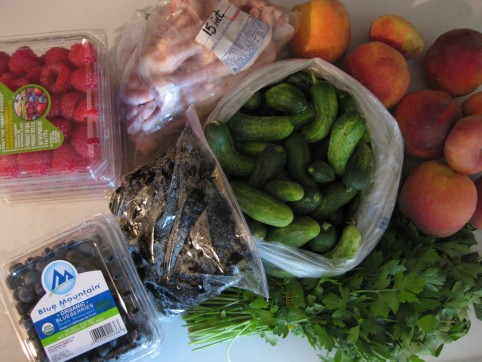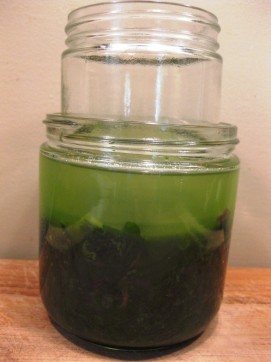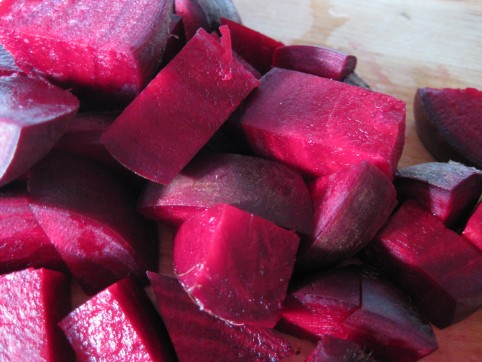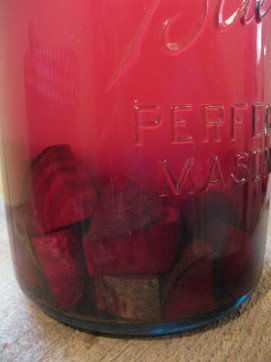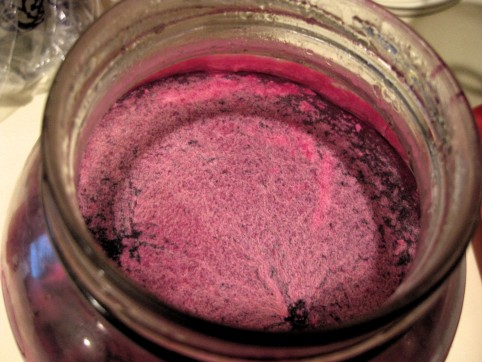I went to the farmer’s market earlier this week and got some nice stuff! I’ve long ago written off the farmer’s market because a.) despite the name, there are hardly any actual farmers there — mostly it’s prepared food and other things I don’t need, b.) it’s usually a mob scene and I really have to be in the right mood to go, otherwise I get grouchy dodging enormous strollers and having people reach over me as I pick my produce, c.) the prices are often even more expensive than getting my organic produce at the grocery store, and the grocery store is so much calmer, and d.) I get flustered paying the vendors because it’s usually a variation of the same scene, where they wait impatiently while I balance my wallet on a mound of peaches and dig for one dollar bills while having my change spill into the crevices between the fruit.
So it’s unusual that I went in the first place, but I was trying to hunt down some really small cucumbers to make my Hubby a new batch of Bubbies pickles. And I found them! Organic, for $2 a pound. I also got some nice spray-free Colorado Palisade peaches, organic parsley, organic raspberries & blueberries, freshly roasted still-warm Hatch chiles (oh yessss it’s chile season!!!), and my most exciting purchase of all…pastured chicken feet for making stock!!! I’ve been wanting to find a local source for pastured chicken; we get pastured eggs from a lady at my former employer (I still go there for eggs & contract work…in that order), but pastured chicken I had yet to find until this week. I was really excited! And pastured chicken feet! I realize how non-normal it sounds that chicken feet were the highlight of my day. But if you own a copy of the Nourishing Traditions cookbook, turn to page 124 and read through the Chicken Stock recipe, where it says “By all means, use chicken feet if you can find them — they are full of gelatin. (Jewish folklore considers the addition of chicken feet the secret to successful broth.).”
And the stock turned out great! I’ll write more about it soon! (Edit: Click here to read more.)
In the mean time, have a wonderful evening and see you tomorrow for Gratitude Sunday~
